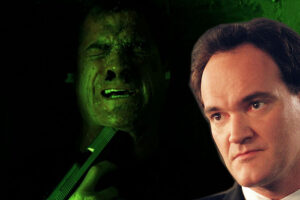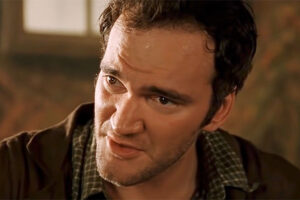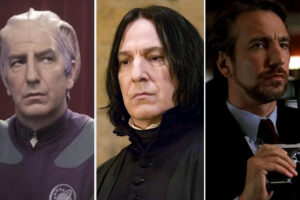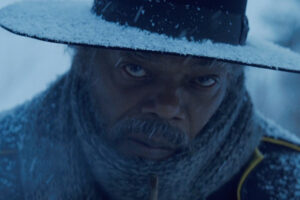
In the pantheon of cinematic food moments, few can match the intensity and allure of the strudel scene from Quentin Tarantino’s “Inglourious Basterds.” This scene is a masterful blend of suspense and culinary artistry that leaves viewers craving both narrative resolution and a taste of that impeccably crafted pastry.
A Quiet Café with a Side of Tension
Set in a quaint Parisian café, the scene unfolds as Colonel Hans Landa, played with chilling charm by Christoph Waltz, meets with Shosanna Dreyfus, portrayed by Mélanie Laurent, who is secretly a Jewish fugitive. The tension is palpable, as Shosanna sits across from the man responsible for her family’s death, unbeknownst (or beknowns) to him. Amidst this psychological chess game, Landa orders two strudels, instructing the waiter to wait for the cream—“Attendez la crème.”

The strudel itself is a character in this scene, a symbol of the false civility and underlying menace that Landa represents. As the camera zooms in on the flaky pastry, the layers of buttery dough are almost audible, and the dusting of powdered sugar is as delicate as the situation is fraught. The waiter finally arrives with the cream, and Landa’s insistence on its presence before they begin eating heightens the suspense to an almost unbearable level.
Engaging the Senses

Tarantino’s attention to detail ensures that the audience’s senses are fully engaged. We can almost taste the sweet, crisp layers and feel the smooth cream complementing the texture. The act of eating the strudel is performed with such precision and care that it becomes a ritualistic pause in the conversation, a moment of normalcy amidst the chaos of war and the undercurrent of violence.
The meticulous sound design amplifies this effect; the soft crunch of the strudel, the delicate clink of silverware, and the subtle scrape of cream being spread on the warm pastry are all auditory cues that deepen the sensory experience, drawing the viewer even closer into the scene’s intimate yet dangerous dance.
The scene is a testament to Tarantino’s ability to use food as a narrative device. It’s a moment of civilized reprieve that contrasts sharply with the brutality of the film’s context, making the strudel a symbol of the life that Shosanna is being denied. The audience is left salivating, not just for the strudel, but for the catharsis of justice that we hope to see unfold.
The Craving Beyond the Screen
As the scene ends and the characters part ways, the viewers are left with a craving that goes beyond the screen. The strudel, with its golden crust and rich filling, becomes a culinary icon that is as unforgettable as the scene itself. It’s no wonder that many find themselves seeking out the nearest bakery post-viewing, hoping to capture even a crumb of the tension and release that Tarantino baked into one of his most memorable scenes.
Tarantino’s Culinary Cinema

In the realm of Tarantino’s culinary cinema, the strudel scene in “Inglourious Basterds” is not alone in its sensory impact. It shares the stage with the iconic burger and drink scene from “Pulp Fiction,” where Samuel L. Jackson’s character, Jules, delivers a chilling monologue while casually biting into a burger, the mundane act juxtaposed with the impending violence, creating a surreal and gripping tableau.
Similarly, the milkshake scene with Uma Thurman’s character, Mia Wallace, sipping a $5 shake, prompts the audience to ponder the extravagance and simplicity of the act, all while building an intimate tension across the diner table.
These moments, much like the strudel scene, are Tarantino’s signature servings that blend the everyday with the extraordinary, making us yearn for a taste of both the food and the thrilling cinematic world he creates.










Leave a Reply